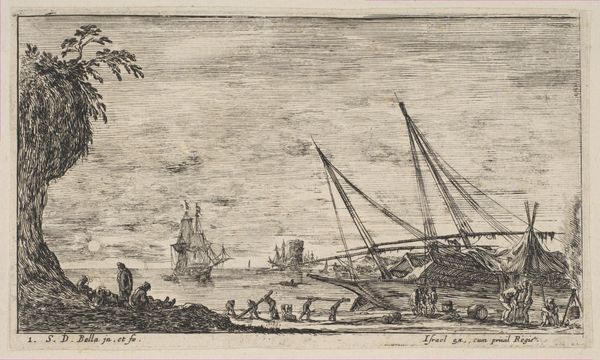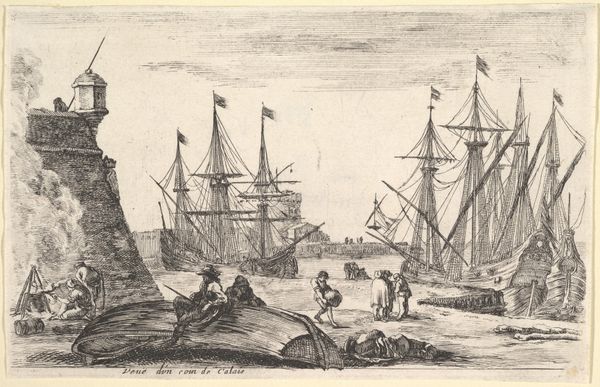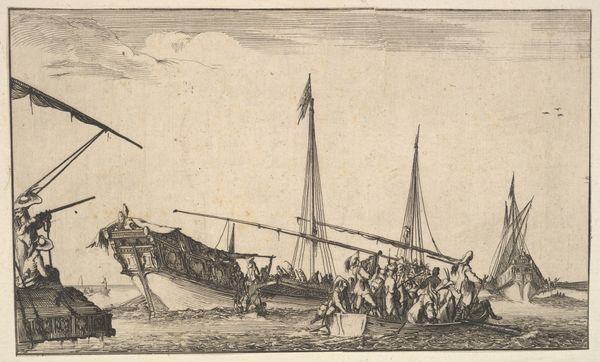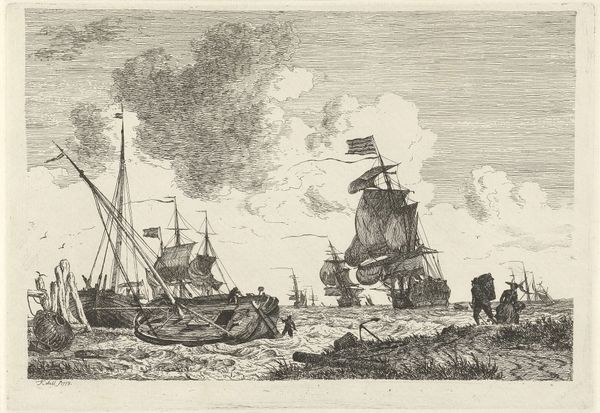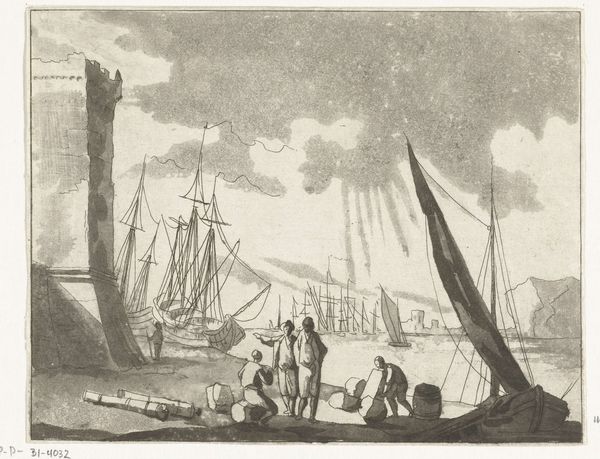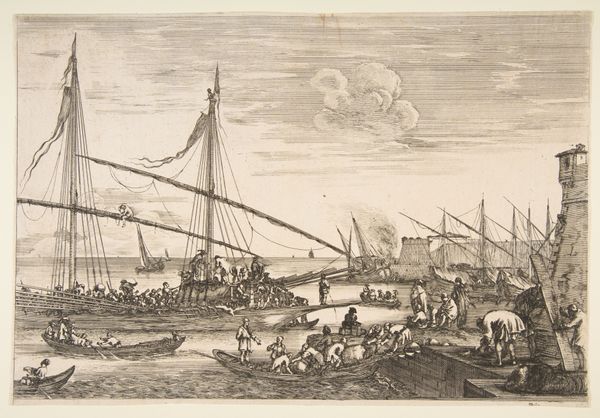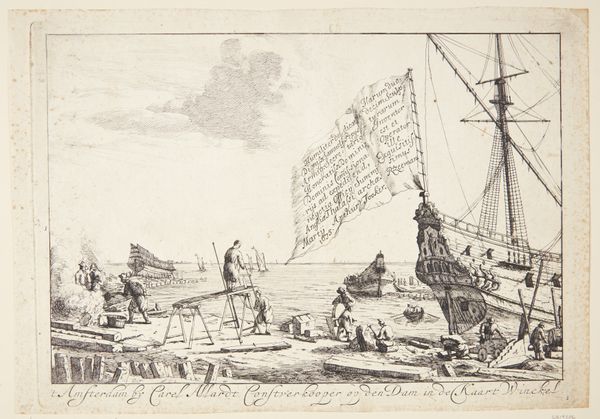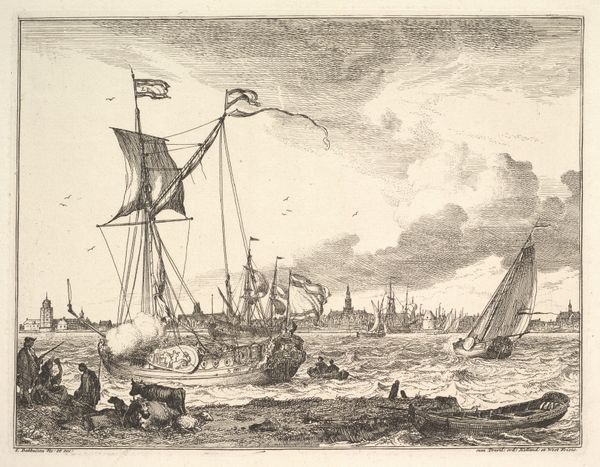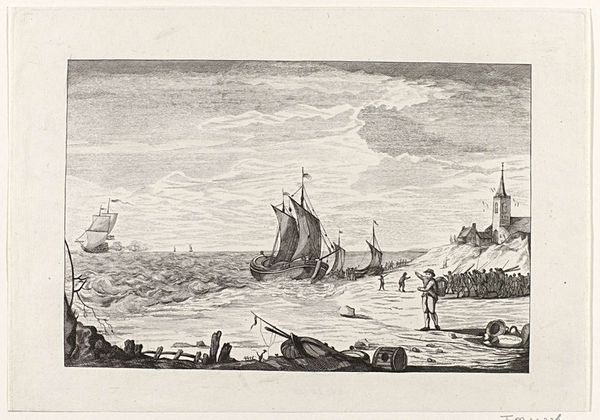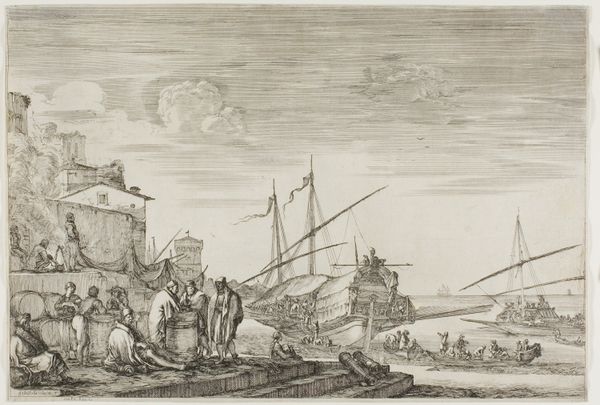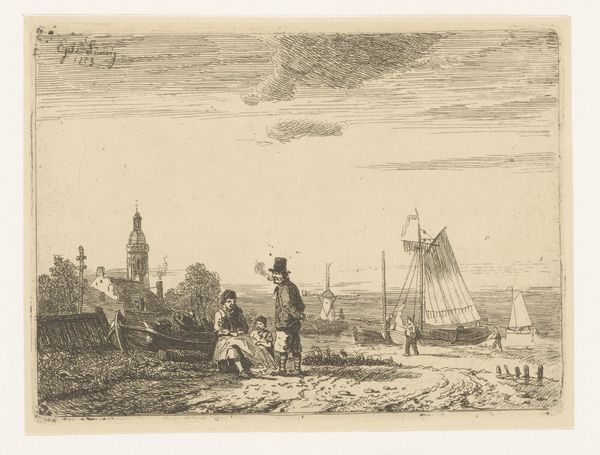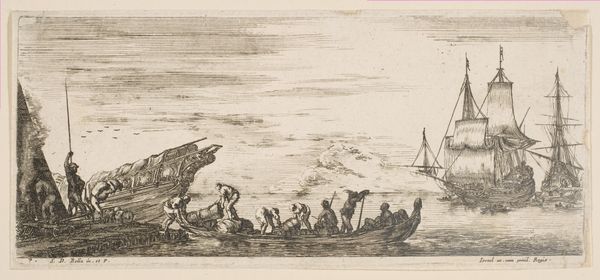
A galley covered in sails to left, six cannons and four people to left in foreground, one man seated at far left smoking a pipe, a man assisting others disembarking from rowboats to right, other rowboats and ships in the background, from 'Views of the port of Livorno' (Vues du port de Livourne) 1652 - 1657
0:00
0:00
drawing, print, etching
#
drawing
#
boat
#
baroque
#
ship
# print
#
etching
#
landscape
#
cityscape
#
history-painting
#
italian-renaissance
Dimensions: Sheet: 9 3/8 x 10 5/16 in. (23.8 x 26.2 cm)
Copyright: Public Domain
Editor: So, this etching by Stefano della Bella, "Views of the port of Livorno," made sometime between 1652 and 1657, has quite a detailed scene. I am immediately struck by the contrast between the activity on the shore and the static, almost looming presence of the ship. How do you interpret this work, considering its historical context? Curator: I think you’re right to note that contrast. Consider Livorno at this time. It was a crucial port, a place of exchange, but also one defined by power dynamics—the powerful Medici family, the labor of sailors, the presence of armaments. Does this print celebrate maritime power or comment on social structures? Are the workers active participants, or are they subdued figures serving a grander narrative of mercantile success? Editor: That's interesting. I hadn't really thought about the people in the print as possibly representing a labor force tied to trade and Medici power. I was focusing more on the ship as the center of the artwork, I feel that it glorifies Italian Renaissance, what do you think? Curator: Perhaps. But from a critical perspective, might the grandeur of the ship obscure the stories and labor that enable its existence? Where are the women in this picture? Which communities profited most from the voyages departing from this port, and at whose expense? It invites us to explore issues of gender, class, and colonialism within a seemingly picturesque scene. Editor: Okay, I see what you mean now. It is definitely an historical depiction with several different, yet cohesive, concepts that were embedded at that period in time. Curator: Absolutely. Engaging with art through these lenses can illuminate the complex narratives woven into seemingly straightforward representations. We must consider the power dynamics shaping these 'views.' Editor: That has provided me with so much insight, I will be mindful of the different perspectives in this artwork moving forward. Curator: It’s about recognizing that art never exists in a vacuum, but is always entangled with the social and political forces of its time. Thanks for having this chat.
Comments
No comments
Be the first to comment and join the conversation on the ultimate creative platform.
